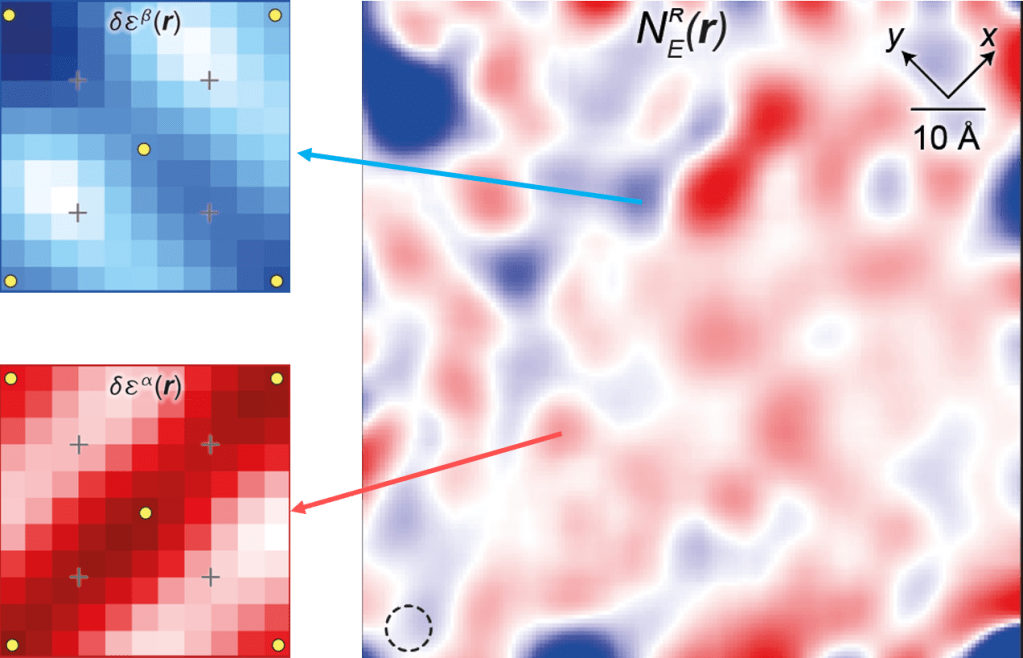Discovery of Orbital Ordering in Bi2Sr2CaCu2O8+x

The primordial ingredient of cuprate superconductivity is the CuO2 unit cell. Here, theoretical attention usually concentrates on the intra-atom Coulombic interactions dominating the 3d9 and 3d10 configurations of each copper ion. However, if Coulombic interactions also occur between electrons of the 2p6 orbitals of each planar oxygen atom, spontaneous orbital ordering may split their energy levels. This long predicted intra-unit cell symmetry breaking should then generate an orbital ordered phase, for which the charge-transfer energy E separating the 2p6 and 3d10 orbitals is distinct for the two oxygen atoms. Here we introduce sublattice resolved ε(r) imaging techniques to CuO2 studies and discover intra-unit-cell rotational symmetry breaking of ε(r), with energy-level splitting between the two oxygen atoms on the 50 meV scale. Spatially, this state is arranged in Ising domains of orthogonally oriented orbital order that appear bounded by dopant ions, and within whose domain walls low energy electronic quadrupolar two-level systems occur. Overall, these data reveal a Q=0 orbitally ordered state that splits the energy levels of the oxygen orbitals by ~50 meV, in CuO2.
Nature Materials, 23, 492–498, 2024.
Press release: Oxford news: Long-predicted quantum state confirmed